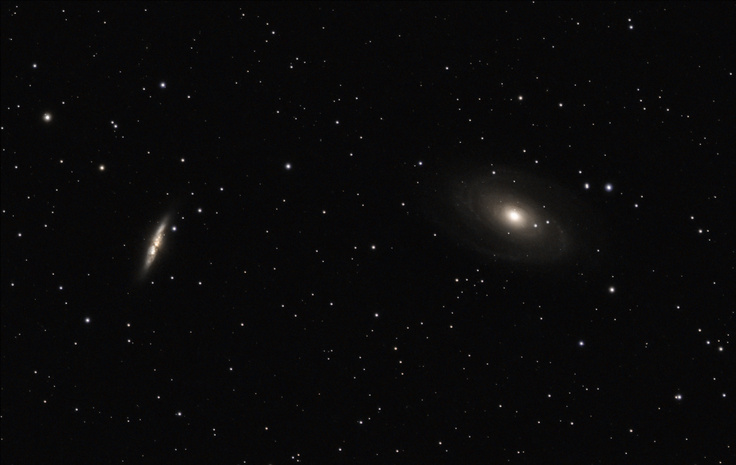Bode's Galaxy & Cigar Galaxy
16 May 2023It’s the middle of galaxy season and I’d never done these two before. They’re both near each other and are within my field of view, so I thought I’d try them this evening. I manage to get about 1.5hrs of data in total.
Bode’s Galaxy (Messier 81) is one of the brightest galaxies in the night sky. It is located 11.6 million light-years from Earth in the constellation Ursa Major and has an apparent magnitude of 6.9. It’s neighbour, Cigar Galaxy (Messier 82) shines brightly at infrared wavelengths and is remarkable for its star formation activity. The Cigar galaxy experiences gravitational interactions with its galactic neighbor, M81, causing it to have an extraordinarily high rate of star formation — a starburst.
I’m still experimenting, so I thought I’d try different exposure length and gain. I’ve learnt how to successfully stack different subs in Deep Sky Stacker so it couldn’t hurt. The questions I wanted to answer were, how long can I expose without star trails? I found even 5min exposures were fine. Perhaps I could go longer but that’s an experiment for another evening. I also wanted to know if I should prioritize low read noise vs full well capacity. You see, my camera is one that has Dual Gain Output technology. This means that at gain of 100, my readout noise drops and my dynamic range increases slightly. However, my full well capacity drops quite a lot. In practice, a bigger full well capacity means I can take longer exposures to catch the dimmer light without blowing out the brighter areas. Of course, I might also be able to take shorter exposures so I don’t blow out the highlights, and still catch the dimmer light courtesy of more sensitivity with the higher gain. This is why I wanted to experiment. So far, it’s looking like the higher gain gives slightly worse results, but I’ll report on that later.
I’m happy with the image I got below given only 1.5 hours of integration time. However, I’m not happy with how monochrome it’s come out. There’s not even a hint of colour in the galaxy. I’ll need to investigate why and try to improve on it in future.
